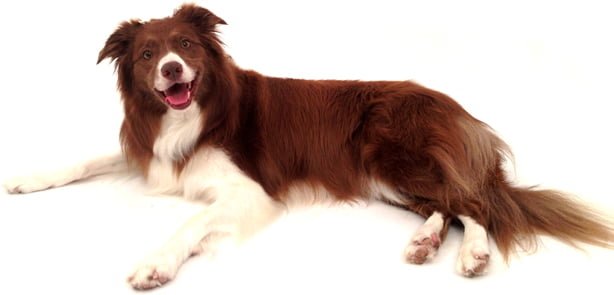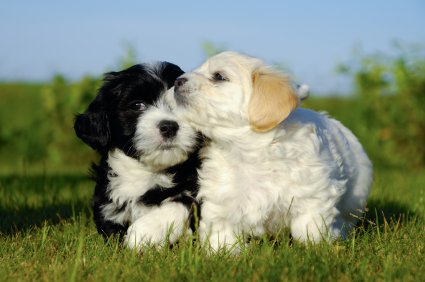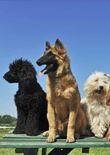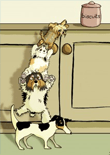By
Sally Gutteridge
|
Personal ,
Posts
 Extreme barking, of the high pitched Yorkshire terrier variety, is by far enough every morning to have me click on the kettle and feed my dog. I pop open the dog treats purely to silence the demanding holler. Being a somewhat relaxed dog trainer has its perks but this is not one of them. Each bark provokes a twitch of the eyelid equal to none.
Extreme barking, of the high pitched Yorkshire terrier variety, is by far enough every morning to have me click on the kettle and feed my dog. I pop open the dog treats purely to silence the demanding holler. Being a somewhat relaxed dog trainer has its perks but this is not one of them. Each bark provokes a twitch of the eyelid equal to none.
The Yorkie in question is a tiny female called Penny, rescued from a classified ad with her four sisters because they had reached the end of their breeding use. Penny is 4kg and 10 years old.
Despite her tiny size and generous age, Penny the Yorkie has me wrapped around her little paw. I know that I am reinforcing her bark by rewarding it with a treat. I know that she will never stop whilst the tirade is fueled with a gravy bone. This morning I even thought about giving her a second treat because she didn’t settle too well after the first.
I feed my dog because she demands it. I admit that she is actually, albeit inadvertently, trained to bark for a biscuit. I did this by reinforcing the first bark and in response I feed my dog every time she carries out the unhelpful behavior. She is simply doing what I have taught her. My advice to you is never get into this position with your dog. It is much more difficult to remove a reinforced habit than to train a good one in the first place.
Dogs are bright creatures. They will soon begin to read each little behavior that you carry out, then chain them together in the hope that this chain leads to a walk or dinnertime. Watch your own dog as he reacts to things you do. Particularly at the times of day he normally gets a meal. If he always observes a behavior of yours that leads to him being fed then he will soon begin to anticipate the meal. Soon his behavior will show the anticipation and the big brown expectant eyes will have you thinking “I had better feed my dog”.
If you are responding to his behavioral prompt to feed him then it will not take your dog long to realize this. Now all he needs to do is decide that he would like his meal earlier in the day, or before you were ready to offer it. Your dog will soon work out that if he bugs you long enough then he will prompt mealtime. He knows that you will automatically think it must be time to feed my dog. You have probably already wondered how your dog knows the time. He doesn’t, he just knows what you do each day before it’s his dinner time.
This works in exactly the same way with treats, walks and everything else that your dog will benefit from. I knew a hearing dog specifically trained to touch his owner and lead to a sound. Every single day at dinnertime this lovely dog would touch his owner and lead to the food tub. A cute trick which he had learned by prompting for food and that his owner had happily reinforced.
So, to prevent the demanding behavior at mealtimes is actually quite easy. Never allow it to develop in the first place. Do not respond to your dog’s prompts with his infiltration of the idea to your mind of, I must feed my dog. Do not even acknowledge these prompts. These thinly veiled hints can range from kicking the food bowl, barking, whining and scratching at you or the food cupboard. If they begin to develop just change your routine slightly to keep his mealtime a surprise.
Another thing that will help you whilst feeding your dog is control during mealtimes. You can teach him that only by offering a sit position until released will you provide his food. This is an easy thing to teach by simply asking him to sit and wait whilst you place the food onto the floor. If he moves from the position before you give permission then just take the food out of his reach until he sits back down. When he sits and waits nicely just release him by saying something like “take it”.
Initially this may need to be repeated a few times but will quickly become the established behavior at mealtimes.
The way our dogs work things out is brilliant. Their thought processes are intriguing to bear witness to and next time you think I had better feed my dog, take a look around and see what your canine is up to. You might be surprised.

 Hi everyone,
Hi everyone,








 Do you have a new puppy in your home, or are you thinking of taking on a young dog to live with you?
Do you have a new puppy in your home, or are you thinking of taking on a young dog to live with you?


 Do you ever watch dog owners and their pets playing with a ball or toy in the park and wish that your own dog would fetch his toy as nicely? Perhaps your own unwilling canine simply looks towards you and his thrown ball before wandering off to sniff around a nearby bush. His lack of interest in bringing anything back, leaving you with no option but to retrieve the toy yourself?
Do you ever watch dog owners and their pets playing with a ball or toy in the park and wish that your own dog would fetch his toy as nicely? Perhaps your own unwilling canine simply looks towards you and his thrown ball before wandering off to sniff around a nearby bush. His lack of interest in bringing anything back, leaving you with no option but to retrieve the toy yourself?
 Are you thinking of introducing a new dog into your home but confused about what type of dog would suit your family and lifestyle? Perhaps you can’t decide whether to give a home to an adult dog or puppy and need a little more information or advice before making a decision?
Are you thinking of introducing a new dog into your home but confused about what type of dog would suit your family and lifestyle? Perhaps you can’t decide whether to give a home to an adult dog or puppy and need a little more information or advice before making a decision?
 Have you ever wondered how professional trainers are able to crate train a puppy and get him or her to be quiet while inside?
Have you ever wondered how professional trainers are able to crate train a puppy and get him or her to be quiet while inside?
 Extreme barking, of the high pitched Yorkshire terrier variety, is by far enough every morning to have me click on the kettle and feed my dog. I pop open the dog treats purely to silence the demanding holler. Being a somewhat relaxed dog trainer has its perks but this is not one of them. Each bark provokes a twitch of the eyelid equal to none.
Extreme barking, of the high pitched Yorkshire terrier variety, is by far enough every morning to have me click on the kettle and feed my dog. I pop open the dog treats purely to silence the demanding holler. Being a somewhat relaxed dog trainer has its perks but this is not one of them. Each bark provokes a twitch of the eyelid equal to none.